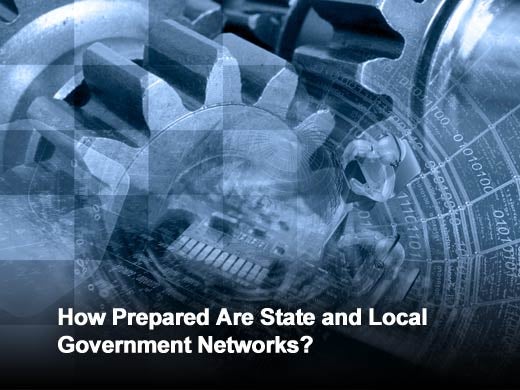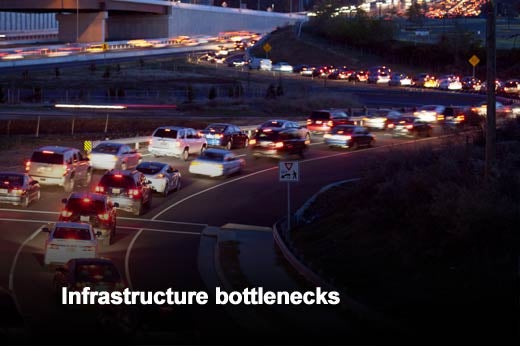MeriTalk, a public-private partnership focused on improving the outcomes of government IT, recently announced the results of its new report, “Big Five in Overdrive: Are State and Local Networks Ready?” The study, underwritten by Brocade, examines how the implementation of the big five – data center consolidation, mobility, security, Big Data, and cloud computing – will affect state and local government IT. According to the report, most state and local organizations plan to fully deploy the big five in the next three years, but almost all (94 percent) say their agency is not fully prepared for the resulting demands on the IT organization.
Click through for findings from a study from MeriTalk, underwritten by Brocade, examining how the implementation of the big five – data center consolidation, mobility, security, Big Data, and cloud computing – will affect state and local government IT.
Infrastructure bottlenecks
As state and local government organizations grapple with more responsibility and tighter budgets, the big five promise to improve performance, productivity and service. While these agencies clearly see the big five benefits, survey results reveal that they are unprepared for the consequent demands on the rest of their IT infrastructure. In fact, if they fully deployed the big five today, 63 percent of state and local IT professionals say they would face moderate to significant network bottleneck risks and 89 percent say they would need additional network capacity to just maintain current service levels.
Risks and limitations
As demand for infrastructure rapidly outstrips the supply, capacity isn’t all that will suffer. Respondents also report that as a result of the infrastructure imbalance created by unsynchronized big five adoption, their agency will face security risks (59 percent), bandwidth limitations (55 percent), storage limitations (44 percent) and network latency (40 percent).
Better coordination
To overcome these challenges, respondents aren’t asking for new budget or policy changes from leadership; they simply want better coordination. Agencies would benefit from increased efficiencies (72 percent), shared best practices (59 percent) and better decision making (58 percent). Despite the reasonable ask, just two out of five agencies are actively coordinating efforts across the big five.
Support from the top
Support from the top is critical. Tellingly, more than half (52 percent) believe their organization’s senior leaders do not understand the combined impact of the big five on IT. When asked what they most need from their senior leaders, 54 percent of respondents called for clear prioritization from leadership, 47 percent asked for regular coordination across all initiatives, and 44 percent cited the need for standardized documentation of infrastructure requirements.
“If agencies don’t align their plans to the major IT trends driving our industry, both cost and risk will increase,” said Anthony Robbins, vice president Public Sector, Brocade. “The big five will fundamentally reshape how state and local governments can deliver services to citizens – better services at a lower total cost. Agencies can’t afford to wait, but without coordination and planning, network capacity will choke off any chance at delivering benefits.”
Laying the groundwork
While agencies have a long way to go in preparing their networks for the big five, some agencies are laying the groundwork now. Forty-five percent of survey respondents report that they have already taken steps to improve security measures. In addition, agencies have taken steps to improve network policies, reduce network latency, improve scalability and add bandwidth.
“Big Five in Overdrive: Are State and Local Networks Ready?” is based on an online survey of 201 state and local government IT professionals in December 2013. The report has a margin of error of +/- 6.88 percent at a 95 percent confidence level. To download the full study, please visit www.meritalk.com/bigfiveinoverdrive.








